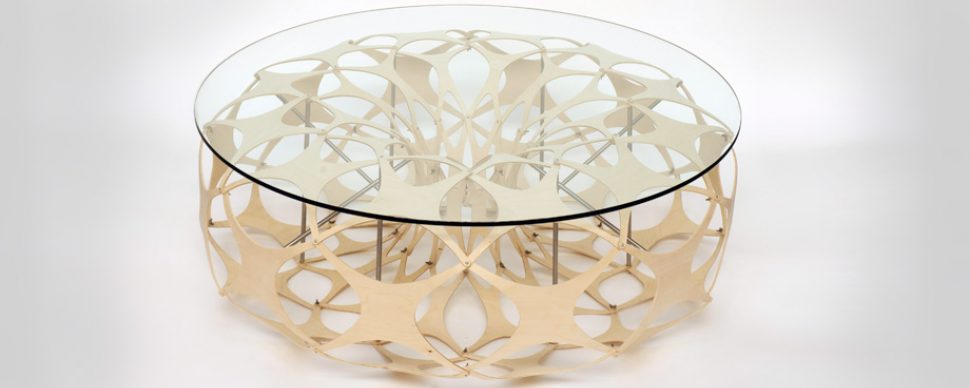Firstly, apologies for my unannounced hiatus from blogging here, it is nice to be back!
On Wednesday I had the pleasure of paying a visit to Lazerian, Liam Hopkin's studio workshop in Manchester specialising in beguiling forms for furniture, mobiles and jewellery. We covered them briefly back in November, and ever since I have been dying to go and take a closer look at their products. I was not disappointed.
[caption id="attachment_3931" align="aligncenter" width="300" caption="The Lazerian logo resplendant on their T Shirts"]
 [/caption]
[/caption]It seems to me that everyone in Manchester either lives or works in an old mill, and Lazerian are no exception. I was greeted by a very upbeat Hopkins, easily recognisable sporting a two tone T shirt with Lazerian's trademark English Pointer emblazoned across it. He explains that the Pointer replaced their previous, (I would say, slightly less edgy) mascot of a squirrel. The dog is the latest inspiration for the studio's foray into angular ornament, a net being run off the plotter as I enter the office for turning the dog into a planar 3d paper model.
As we sit down for a cup of tea, Hopkins tells me about Lazerian's overarching ethos: experimenting with materials, seeing what they are capable of, making the most of them both in the sense of their properties and in the sense of resourcefulness.
[caption id="attachment_3923" align="aligncenter" width="407" caption="Lazerian's Mensa Coffee Table"]
 [/caption]
[/caption]My first destination as we enter their spacious workshop is to check out the CNC machine used to create pieces such as their Mensa tables. Why CNC?
"We wanted CNC from the start ... We can get a lot more out of the material that way - the components we cut would be much more wasteful to make by hand." Hopkins shows me a sheet with the negative forms left after CNC cutting, dozens of X shaped apertures crammed together on the ply. It occurs to me that this is not a big machine, and perhaps Lazerian's fascination with repeated forms and pattern are as much a response to what production resources they have on hand as aesthetics. "The smaller forms force you to be more creative," says Hopkins, "The CNC machine also allows us to keep production in house."
continued tomorrow..



No comments:
Post a Comment